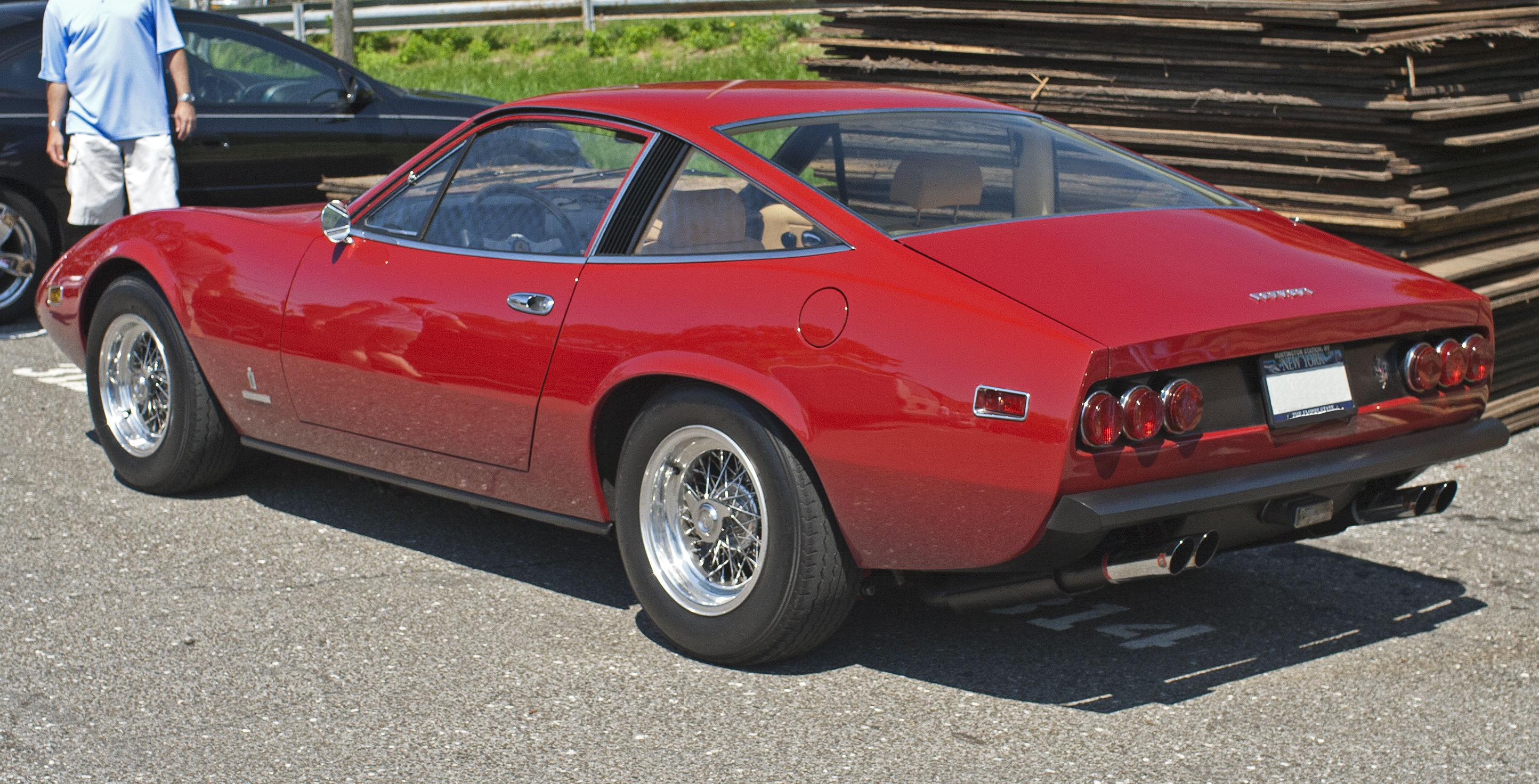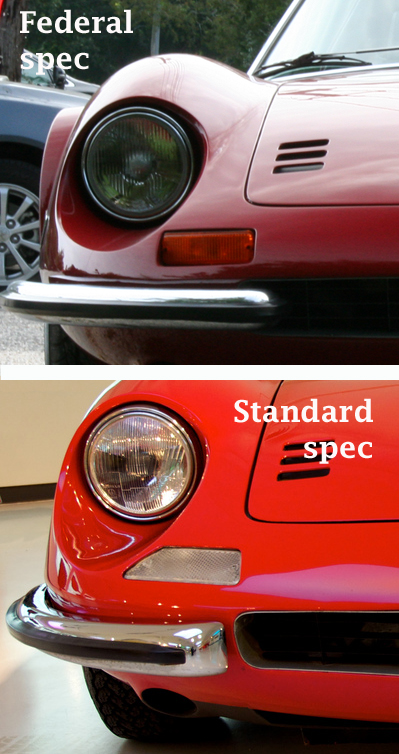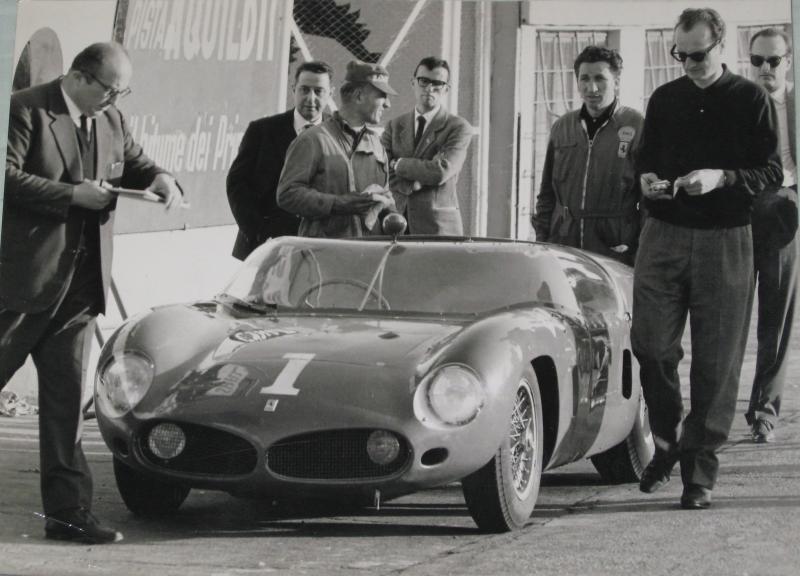|
Ferrari Boxer
The Ferrari Berlinetta Boxer (BB) is series of sports cars produced by Ferrari in Italy between 1973 and 1984. The BB was designed by Leonardo Fioravanti at Pininfarina. The first BB model, the 365 GT4 BB, replaced the front engined Daytona and was the first in a series of road-going Ferraris equipped with a mid-mounted flat-twelve engine. It was also the first mid-engined road-car to bear the Ferrari name and the Cavallino Rampante (prancing horse) logo. The 365 GT4 BB was succeeded in 1976 by the BB 512, equipped with a larger displacement engine, then by the fuel-injected BB 512i in 1981. The series was discontinued in 1984 when the BB 512i was replaced by the Testarossa, which used a revised version of the flat-twelve engine. Background Production of the BB was a major step for Enzo Ferrari. He felt that a mid-engined road car would be too difficult for his buyers to handle, and it took many years for his engineers to convince him to adopt the layout. This attitude began to ... [...More Info...] [...Related Items...] OR: [Wikipedia] [Google] [Baidu] |
Ferrari
Ferrari S.p.A. (; ) is an Italian luxury sports car manufacturer based in Maranello, Italy. Founded by Enzo Ferrari (1898–1988) in 1939 from the Alfa Romeo racing division as ''Auto Avio Costruzioni'', the company built its first car in 1940, and produced its first Ferrari-badged car in 1947. Fiat S.p.A. acquired 50% of Ferrari in 1969 and expanded its stake to 90% in 1988. In October 2014, Fiat Chrysler Automobiles (FCA) announced its intentions to separate Ferrari S.p.A. from FCA; as of the announcement FCA owned 90% of Ferrari. The separation began in October 2015 with a restructuring that established Ferrari N.V. (a company incorporated in the Netherlands) as the new holding company of the Ferrari S.p.A. group, and the subsequent sale by FCA of 10% of the shares in an IPO and concurrent listing of common shares on the New York Stock Exchange. Through the remaining steps of the separation, FCA's interest in Ferrari's business was distributed to shareholders of FCA, ... [...More Info...] [...Related Items...] OR: [Wikipedia] [Google] [Baidu] |
Cavallino Rampante
The Prancing Horse ( it, Cavallino Rampante, lit=little prancing horse) is the symbol of Italian sports car manufacturer Ferrari and its racing division Scuderia Ferrari. Originally, the symbol was used by World War I pilot Francesco Baracca on his airplane. History Enzo Ferrari was a racing driver for Alfa Romeo in the earlier decades of the twentieth century. Following one of his wins at the Targa Florio, he met Francesco Baracca's parents, who told him that their son used to paint a prancing horse on his airplane and suggested that if Ferrari applied the horse on his cars, he would have good luck. Ferrari took their advice and started to use the black Prancing Horse on a yellow background (yellow being one of the colours of the city flag of his native Modena) as the official Ferrari logo. Initially, all Scuderia Ferrari's cars were manufactured by Alfa Romeo, but after the foundation of Auto Avio Costruzioni (later known as "Ferrari"), Ferrari began to use his Ferrari cars. Us ... [...More Info...] [...Related Items...] OR: [Wikipedia] [Google] [Baidu] |
Mauro Forghieri
Mauro Forghieri (13 January 1935 – 2 November 2022) was an Italian mechanical engineer, best known for his work as a Formula One racing car designer with Scuderia Ferrari during the 1960s and 1970s. He is credited with introducing the first designed rear wings to Formula One at the 1968 Belgian Grand Prix. He oversaw numerous technical developments during his tenure at Ferrari, including the creation of the 250 GTO and P-series sports racing cars, the Ferrari flat-12 series of engines, Ferrari's first turbocharged engine in the 126 C F1 car, and a prototype semi-automatic transmission in 1979. During Forghieri's tenure with Ferrari, the company won the F1 World Driver's Championship four times and the F1 World Constructors' Championship seven times. After leaving Ferrari in 1987, he worked at Lamborghini and Bugatti then founded the Oral Engineering Group in 1995. Early life Forghieri was born in Modena, Emilia-Romagna, on 13 January 1935, the only child of Reclus and Af ... [...More Info...] [...Related Items...] OR: [Wikipedia] [Google] [Baidu] |
Ferrari 158
The Ferrari 158 was a Formula One racing car made by Ferrari in 1964 as a successor to the V6-powered Ferrari 156 F1. Ferrari 158 The 158 was equipped with a 1.5-litre V8 engine, with a bore and stroke of . It was the first Ferrari Formula One car to use a monocoque chassis. John Surtees drove the Ferrari 158 to win his only Formula One Drivers' World Championship, in 1964. Ferrari won the 1964 Formula One World Championship by competing in the last two races in cars painted not in the traditional Rosso corsa but in white and blue. These cars were entered by the factory-supported but unofficial NART team, rather than the Scuderia Ferrari factory team. This was done as a protest concerning arguments between Ferrari and the Automobile Club d'Italia regarding the homologation of a new mid-engined Ferrari race car. Ferrari 1512 Ferrari also built a flat-12 powered Formula One car using the same chassis as the 158, designated the Ferrari 1512 or Ferrari 512 F1. The ''Tipo'' ... [...More Info...] [...Related Items...] OR: [Wikipedia] [Google] [Baidu] |
Ferrari 365 GTC/4
The Ferrari 365 GTC/4 (Type F101) is a 2+2 grand tourer produced by Ferrari from 1971 to 1972. It was based on the chassis of the Ferrari 365 GTB/4 "Daytona". In the very short two-year production run 505 examples of the GTC/4 were produced. Its chassis and drivetrain, however, were carried over mostly unaltered (apart from a wheelbase stretch to provide more satisfying rear seat room) on its successor, the 1972 365 GT4 2+2. Design The GTC/4's coupé bodywork by Pininfarina enclosed two front and two rear seats. The rear seats were small and the slanting rear window limited rear headroom. So it can be seen to replace the two-seat 365 GTC that had been discontinued in 1970. With its wedge shape, fastback silhouette, sharp creases and hidden headlamps the GTC/4's styling clearly reflects the 365 GTB/4 "Daytona" it was based on. Power steering, electric windows and air conditioning were standard. The cabin was upholstered in mixed leather and tartan fabric, unique to this model ... [...More Info...] [...Related Items...] OR: [Wikipedia] [Google] [Baidu] |
Dino (automobile)
Dino () was a marque best known for mid-engined, rear-drive sports cars produced by Ferrari from 1957 to 1976. The marque came into existence in late 1956 with a front-engined Formula Two racer powered by a brand new '' Dino'' V6 engine. The name Dino was used for some models with engines smaller than 12 cylinders, it was an attempt by the company to offer a relatively low-cost sports car. The Ferrari name remained reserved for its premium V12 and flat-12 models until 1976, when "Dino" was retired in favour of full Ferrari branding. History The name Dino honors Ferrari founder Enzo Ferrari's late son, Alfredo "Dino" Ferrari, credited with designing the V6 engine used in the car. Along with engineer Vittorio Jano, Alfredo persuaded his father to produce a line of racing cars in the 1950s with V6 and V8 engines. The ''Dino'' script that adorns the badge and cylinder head covers was based on Alfredo's own signature. The Dino models used Ferrari naming convention of displacement ... [...More Info...] [...Related Items...] OR: [Wikipedia] [Google] [Baidu] |
Dino 206 GT And 246 GT
The Dino 206 GT, 246 GT and 246 GTS are V6 mid-engined sports cars produced by Ferrari and sold under the Dino marque between 1967 and 1974. The Dino 246 was the first automobile manufactured by Ferrari in high numbers. It is lauded by many for its intrinsic driving qualities and groundbreaking design. In 2004, ''Sports Car International'' placed the car at number six on its list of Top Sports Cars of the 1970s. '' Motor Trend Classic'' placed the 206/246 at number seven in their list of the 10 "Greatest Ferraris of all time". Dino 206 GT The production Dino 206 GT was designed by Aldo Brovarone and Leonardo Fioravanti at Pininfarina and built by Scaglietti. It had the soft edges and curving lines typical of earlier Italian cars, unlike its angular successor, the 308 GT4. It was named after Enzo Ferrari's late son Alfredo who was affectionately known as Dino to his family. The 206 GT used a transverse-mounted 2.0 litre all-aluminium, 65-degree V6 engine with dual overhe ... [...More Info...] [...Related Items...] OR: [Wikipedia] [Google] [Baidu] |
Ferrari P
The Ferrari P was a series of Italian sports prototype racing cars produced by Ferrari during the 1960s and early 1970s. Although Enzo Ferrari resisted the move even with Cooper dominating F1, Ferrari began producing mid-engined racing cars in the early 1960s with the Dino-V6-engine Formula One Ferrari 246 P and the sport prototype SP-series. The V12 sports car racers followed in 1963. Although these cars shared their numerical designations (based on engine displacement) with road models, they were almost entirely different. The first Ferrari mid-engine road car did not arrive until the 1967 Dino 206 GT, and it was 1971 before a Ferrari 12-cylinder engine was placed behind a road-going driver in the 365 GT4 BB. 250 P Ferrari produced the 250 P in 1963 in response to the FIA introducing a prototype class for the upcoming season of the World Sportscar Championship. This was a new design, with a chassis unrelated to existing 250-series Grand Touring cars. Designed by Mauro Forg ... [...More Info...] [...Related Items...] OR: [Wikipedia] [Google] [Baidu] |
Sports Prototype
A sports prototype, sometimes referred to as simply a prototype, is a type of race car that is used in the highest-level categories of sports car racing. These purpose-built racing cars, unlike street-legal and production-based racing cars, are not intended for consumer purchase or production beyond that required to compete and win races. Prototype racing cars have competed in sports car racing since before World War II, but became the top echelon of sports cars in the 1960s as they began to replace homologated sports cars. Current ACO regulations allow most sports car series to use two forms of cars: grand tourers (GT), based on street cars, and prototypes, which are allowed a great amount of flexibility within set rule parameters. In historic racing, they are often called "sports racing cars". Sometimes, they are incorrectly referred to as "Le Mans cars", whether they are competing in the Le Mans race or not. Types of sports prototypes Since the 1960s, various championships ... [...More Info...] [...Related Items...] OR: [Wikipedia] [Google] [Baidu] |
Ferrari SP
The Ferrari SP (also known as the Ferrari Dino SP) was a series of Italian sports prototype racing cars produced by Ferrari during the early 1960s. All featured a rear mid-engine layout, a first for a Ferrari sports car. Major racing accolades include the 1962 European Hill Climb Championship, two overall Targa Florio victories, in 1961 and 1962, and " 1962 Coupe des Sports" title. At first the SP-series used Vittorio Jano-designed, V6 '' Dino'' engines in both SOHC 60° and DOHC 65° forms. Later, Ferrari introduced a new SOHC 90° V8 engine designed by Carlo Chiti. All used dry sump lubrication and were mated to a 5-speed manual transmission. In total only six chassis were produced with various engine configurations. Many times they were modified and converted into a different specification. The tubular steel chassis, ''tipo 561'', featured all-round independent suspension and disc brakes. All shared the same wheelbase and open body style with some variations. The rear mid-e ... [...More Info...] [...Related Items...] OR: [Wikipedia] [Google] [Baidu] |
Formula 1
Formula One (also known as Formula 1 or F1) is the highest class of international racing for open-wheel single-seater formula racing cars sanctioned by the Fédération Internationale de l'Automobile (FIA). The World Drivers' Championship, which became the FIA Formula One World Championship in 1981, has been one of the premier forms of racing around the world since its inaugural season in 1950. The word ''formula'' in the name refers to the set of rules to which all participants' cars must conform. A Formula One season consists of a series of races, known as ''Grands Prix'', which take place worldwide on both purpose-built circuits and closed public roads. A points system is used at Grands Prix to determine two annual World Championships: one for drivers, the other for constructors. Each driver must hold a valid Super Licence, the highest class of racing licence issued by the FIA. The races must run on tracks graded "1" (formerly "A"), the highest grade-rating issue ... [...More Info...] [...Related Items...] OR: [Wikipedia] [Google] [Baidu] |
Ferrari 246 P
The Ferrari 246 P F1 was a Formula One race car prototype used by Ferrari in 1960. It was Ferrari's first mid-engined car. It made only two World Championship appearances, with its best result being fifth place at the 1960 Italian Grand Prix. Development The disappointing form of the Ferrari 246 in 1959, along with the continuing rise of Cooper and Lotus, finally convinced Enzo Ferrari that the future lay in rear-engine cars. The 246P was developed in secret by a team led by Carlo Chiti. After sorting its tail-heavy weight distribution, it debuted at the 1960 Monaco Grand Prix, retiring on lap 70 with a failed differential, but classified sixth. 156 F2 With the new 1.5 litre rules due to come into force in 1961, the 246P was then pressed into service as a development mule for the revised V6 engine, in which guise it could compete in the existing Formula Two class. It made a single World Championship appearance, at the 1960 Italian Grand Prix, finishing fifth, but won the Formula ... [...More Info...] [...Related Items...] OR: [Wikipedia] [Google] [Baidu] |







